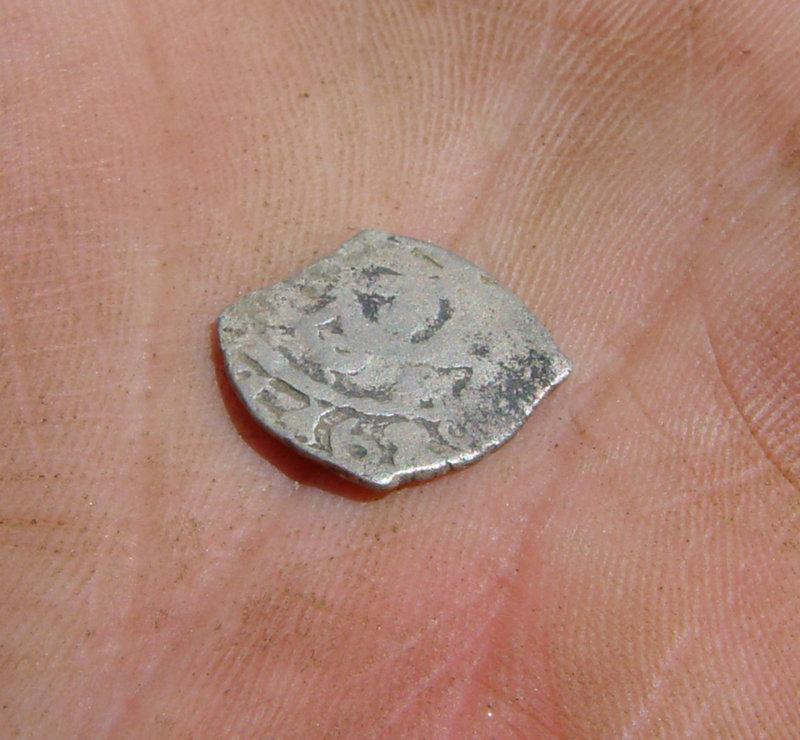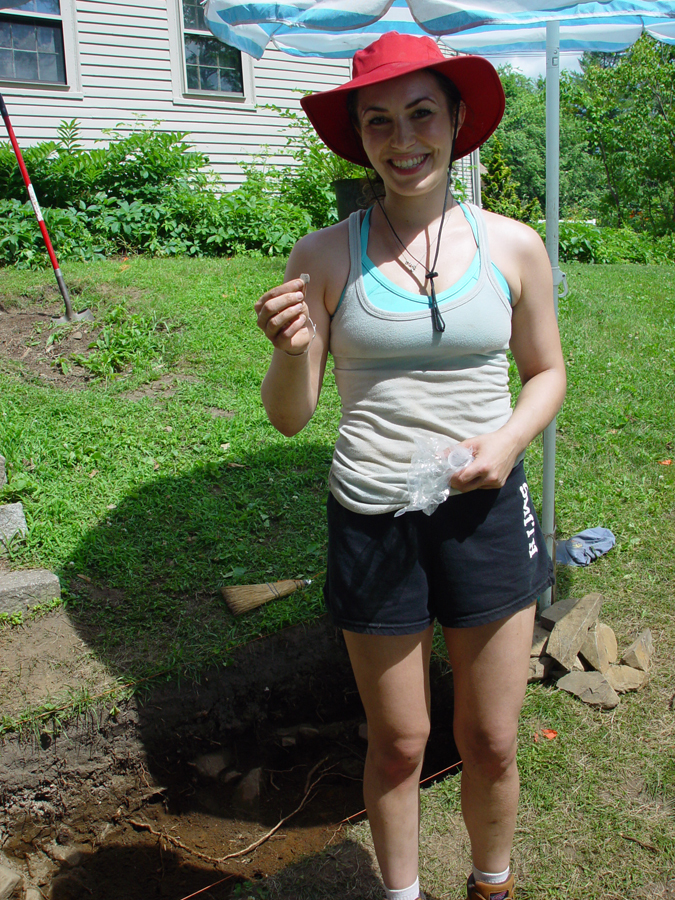SOUTH BERWICK – Whitney Parrish rubbed the tiny, mud-caked fragment in her hand to reveal what looked like engraving marks.
Parrish thought she’d found a shard of pottery, bearing a maker’s mark — a typical find at the Old Fields Archaeological Field School where she was working.
Closer examination by field director Dr. Neill De Paoli revealed that Parrish had actually unearthed a silver coin, known as a Spanish piece of eight.
“I was pretty excited,” said Parrish, a 25-year-old University of Southern Maine anthropology student who found the coin on the first day of her very first archeological dig in South Berwick.
While the coin does not have great monetary value, its discovery here sparked renewed hope for the other members of the small archeology crew, who also wanted to unveil artifacts at the site of an English settlement dating from the 1600s.
According to De Paoli, historical documents suggest that this was the site of the Spencer Garrison, established in the early 1690s as a refuge for settlers during times of conflict with American Indians.
The complex reportedly included several homes, a tavern and a meetinghouse.
This summer, De Paoli and crew are working at what they believe is the site of a tavern run by Humphrey and Mary Spencer from 1696 to 1727.
A bevy of clay smoking pipes, bottles, tankard fragments, pottery shards and building materials like nails, window glass and turned lead unearthed there seems to support their claims.
Most days, the crew works with trowels, brushes, buckets and sifters to mine the debris being taken from the earth. This past week, they were aided by ground-penetrating radar to help discover what lies beneath the surface.
De Paoli, who directed the project since 2010, has done extensive research on the history of the families and native peoples who once lived in the area — specifically the successive generations of Spencer and Goodwin families who occupied the land for much of its 300-plus-year history, until 1959.
“One of my goals is to discover the history of the area, dating from 1675 to the 1720s, a period that hasn’t been well documented,” said De Paoli. “My hope is to create a better understanding of how the competing for shared land use and resources resulted in conflicts between these two groups of people and how that shaped the way they lived — from their daily social interaction to the way they conducted their business.”
De Paoli has been involved in many similar projects since the mid-1970s, mostly at sites in Maine, Massachusetts and New Hampshire.
He is an adjunct professor of American history and archeology at Southern Maine Community College and a historical consultant when he isn’t processing the site.
Each summer, De Paoli oversees an archeology classroom on-site, offering history buffs and college students, like Parrish, hands-on experiences in archeology.
De Paoli’s work is partially funded by field school tuition and donations like a recent Maine Humanities Council grant of $7,500.
A portion of those funds also is earmarked for an Old Berwick tricentennial event to unfold next year.
Those festivities are expected to include a guest speaker series and an exhibit.
In the meantime, artifacts, including the newly found coin, are being stored at the Old Berwick Historical Society’s Counting House museum, a key supporter of the work being done.
Send questions/comments to the editors.




Success. Please wait for the page to reload. If the page does not reload within 5 seconds, please refresh the page.
Enter your email and password to access comments.
Hi, to comment on stories you must . This profile is in addition to your subscription and website login.
Already have a commenting profile? .
Invalid username/password.
Please check your email to confirm and complete your registration.
Only subscribers are eligible to post comments. Please subscribe or login first for digital access. Here’s why.
Use the form below to reset your password. When you've submitted your account email, we will send an email with a reset code.